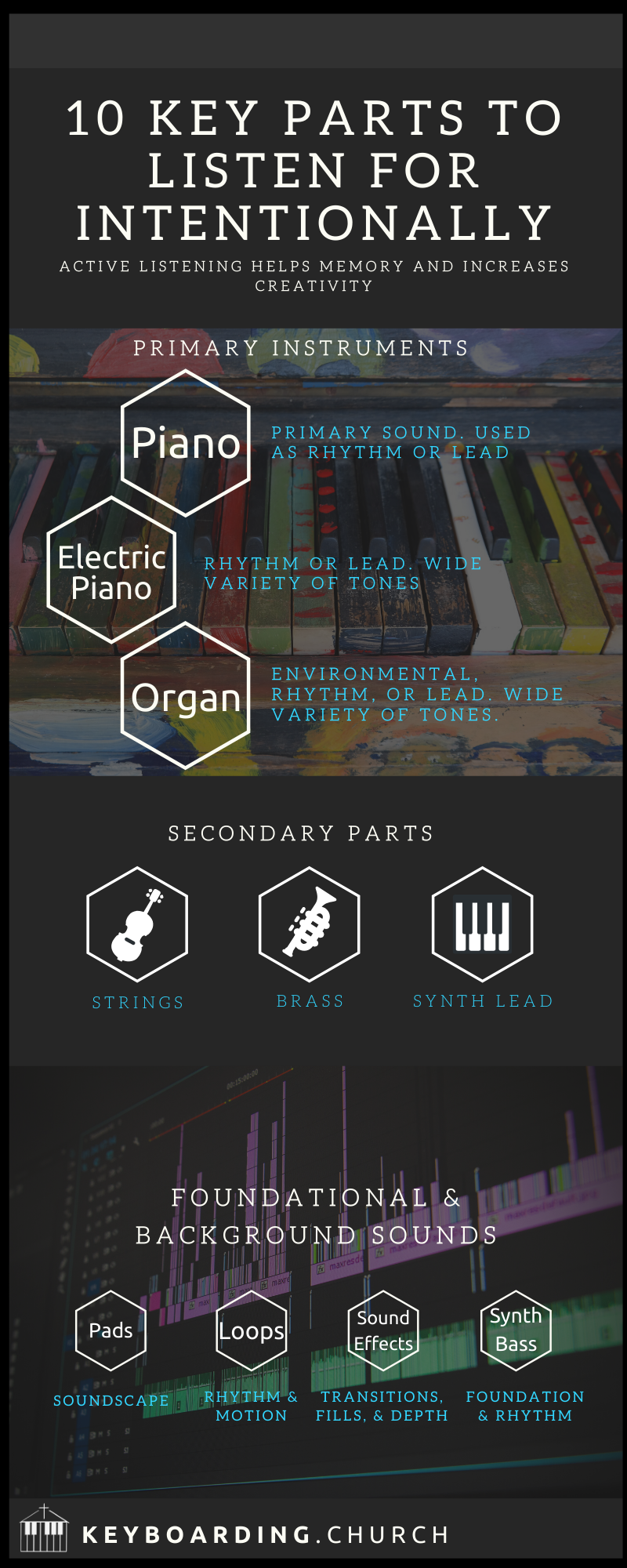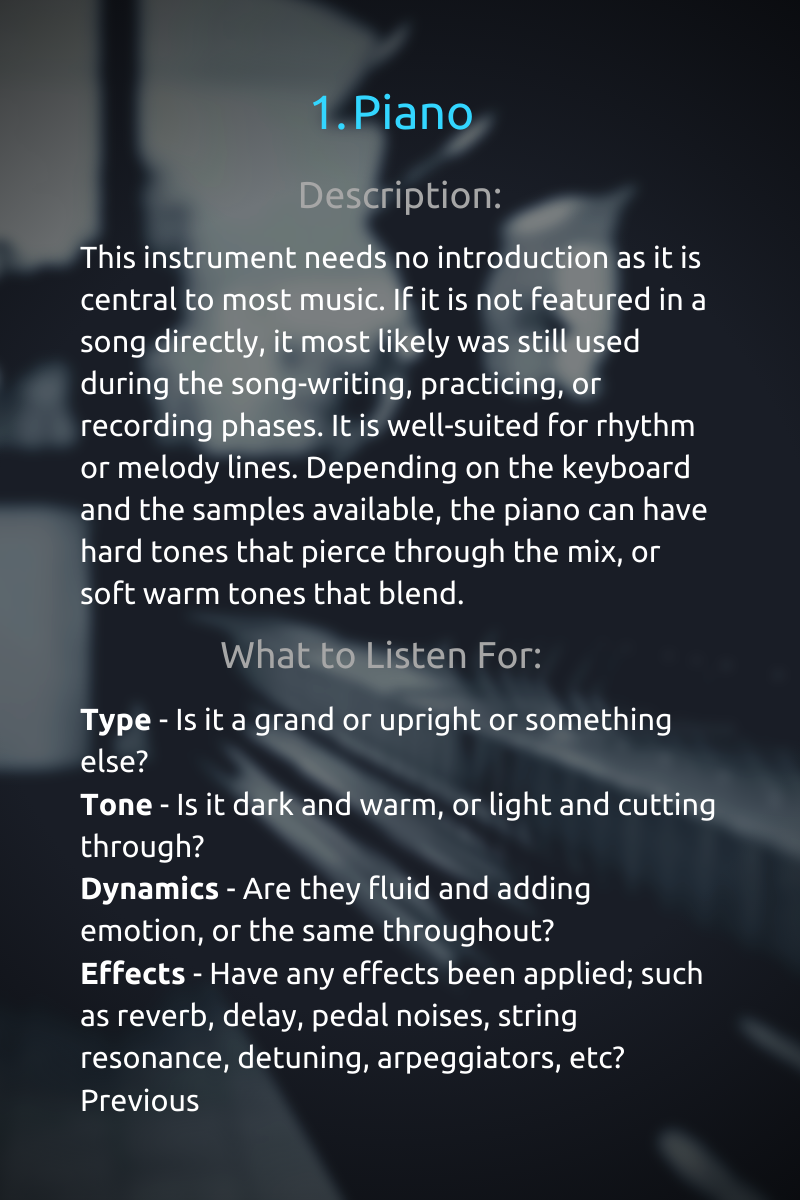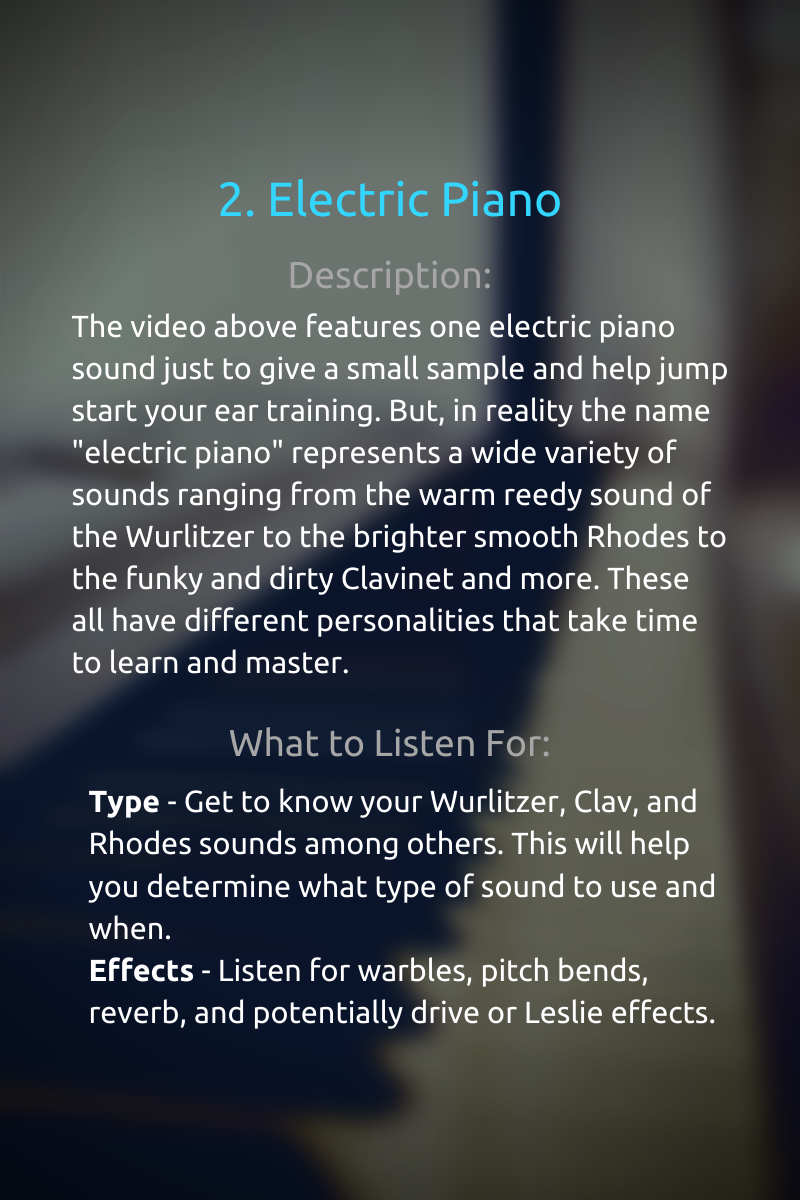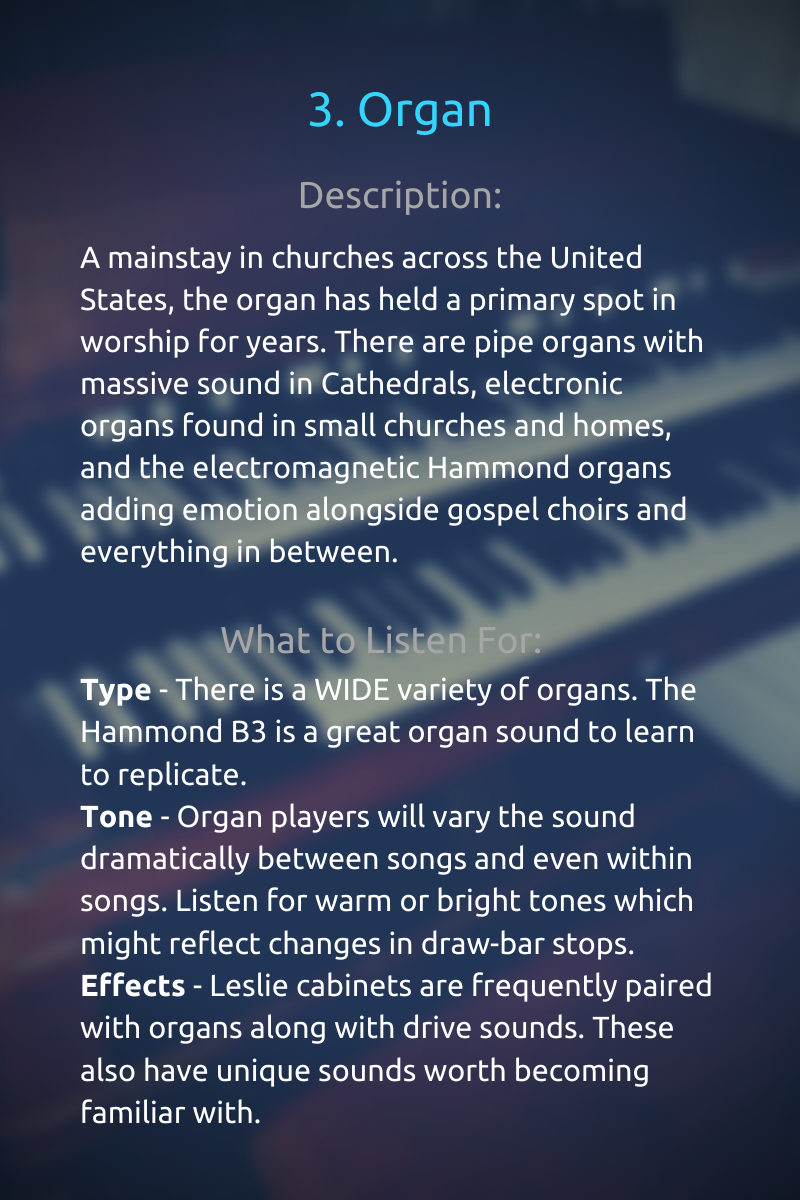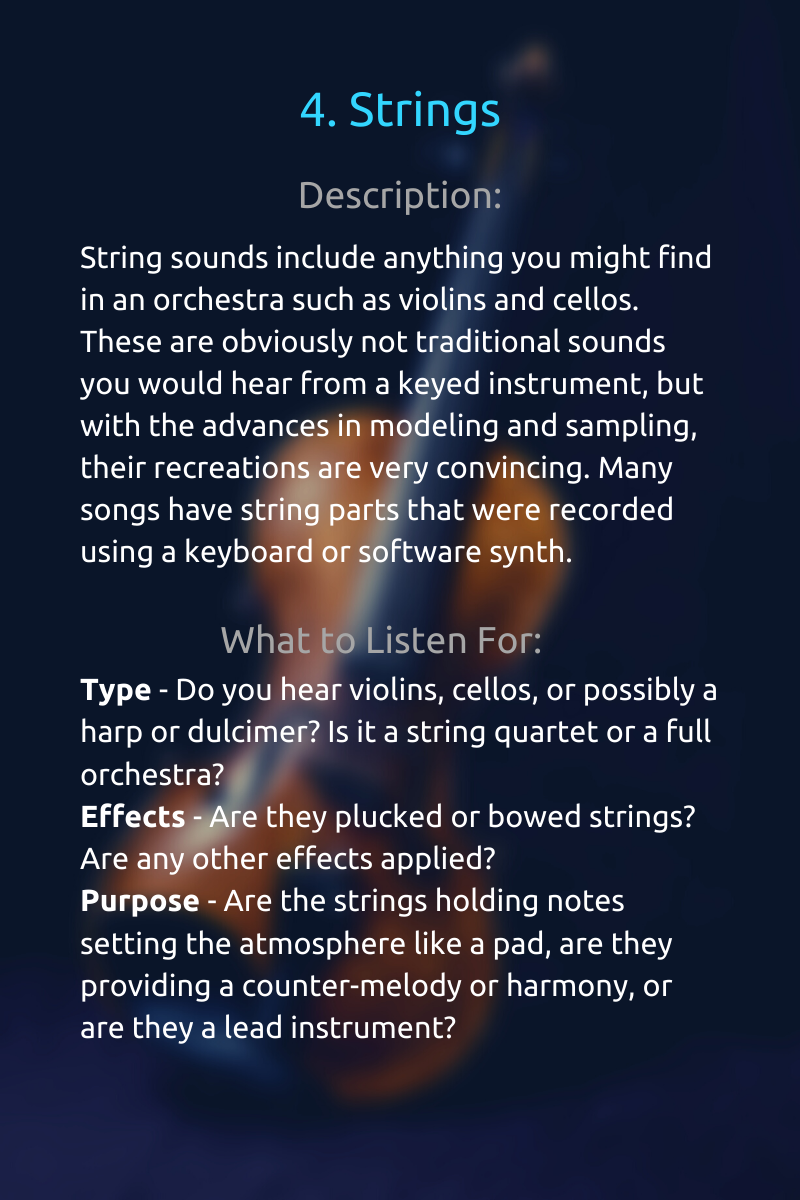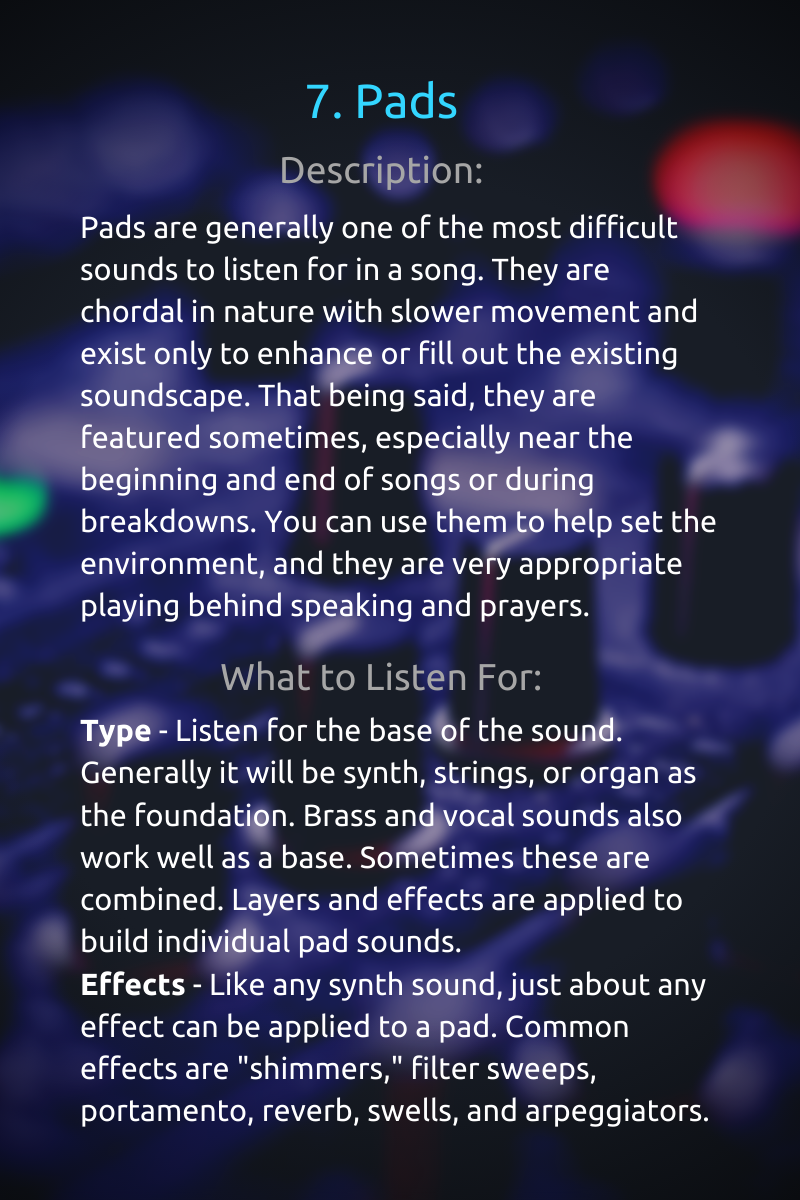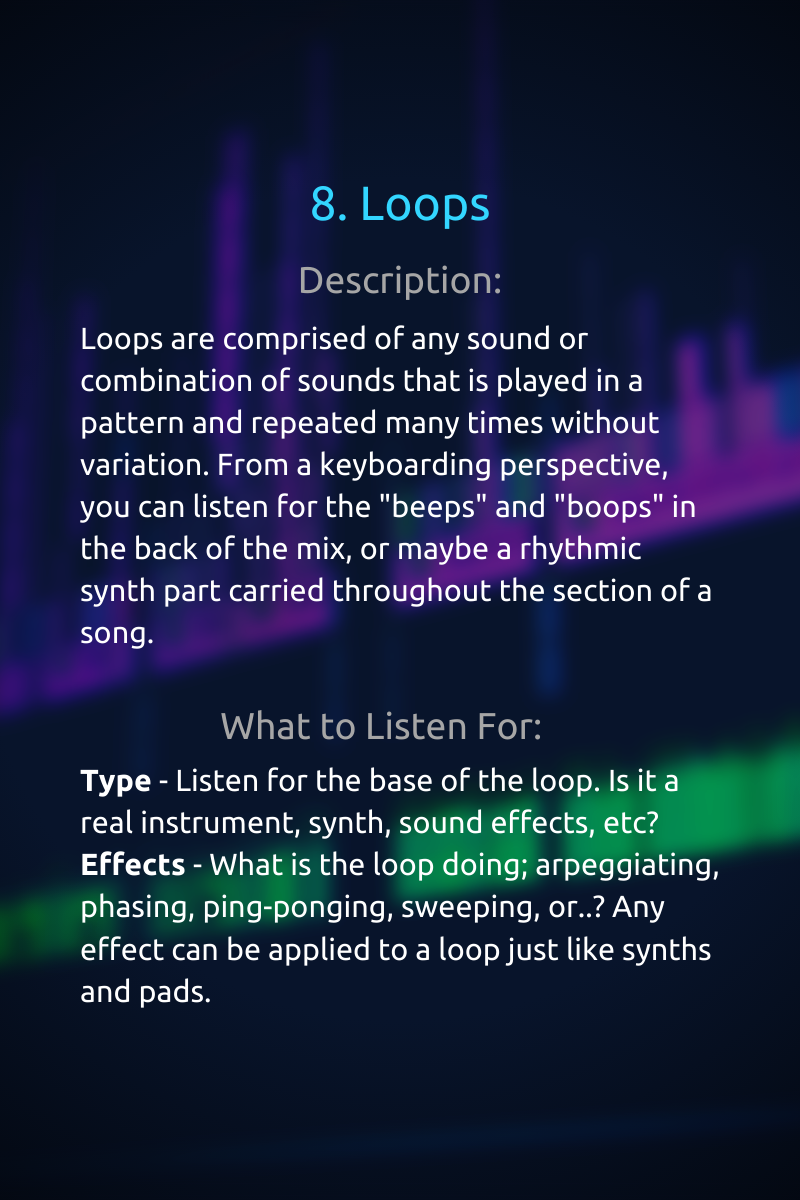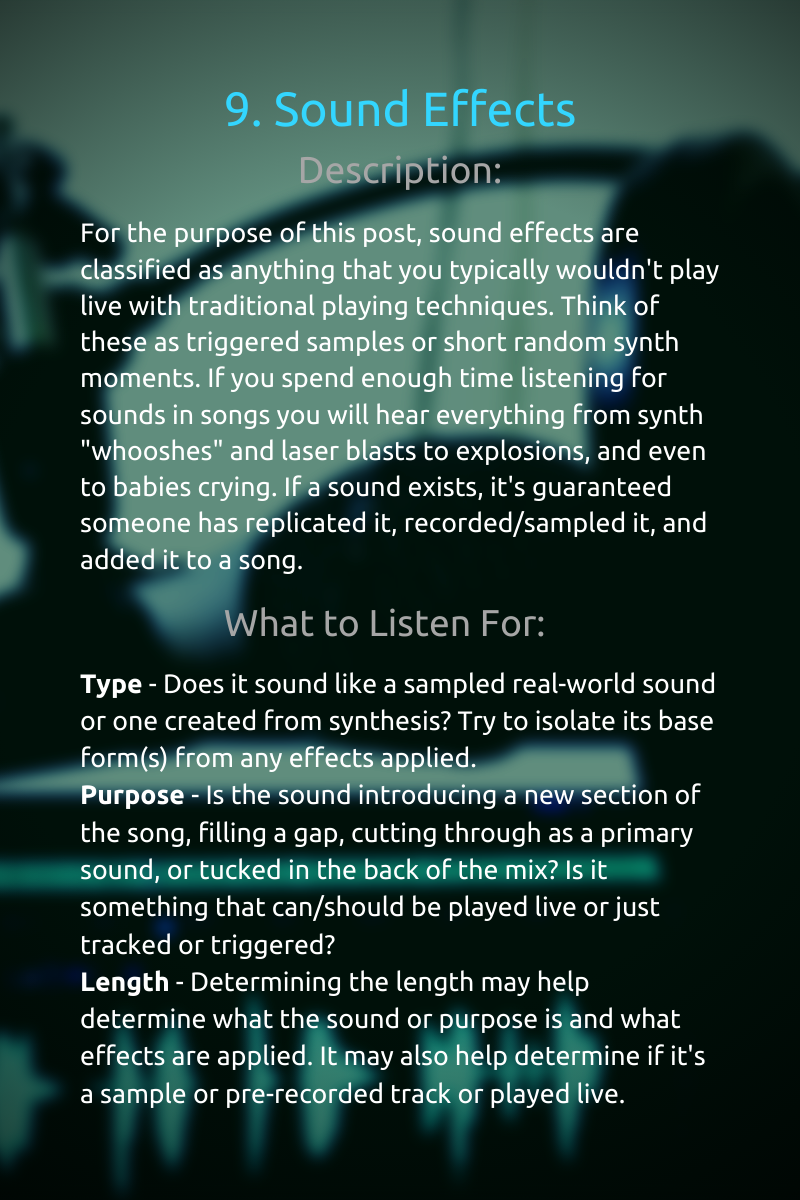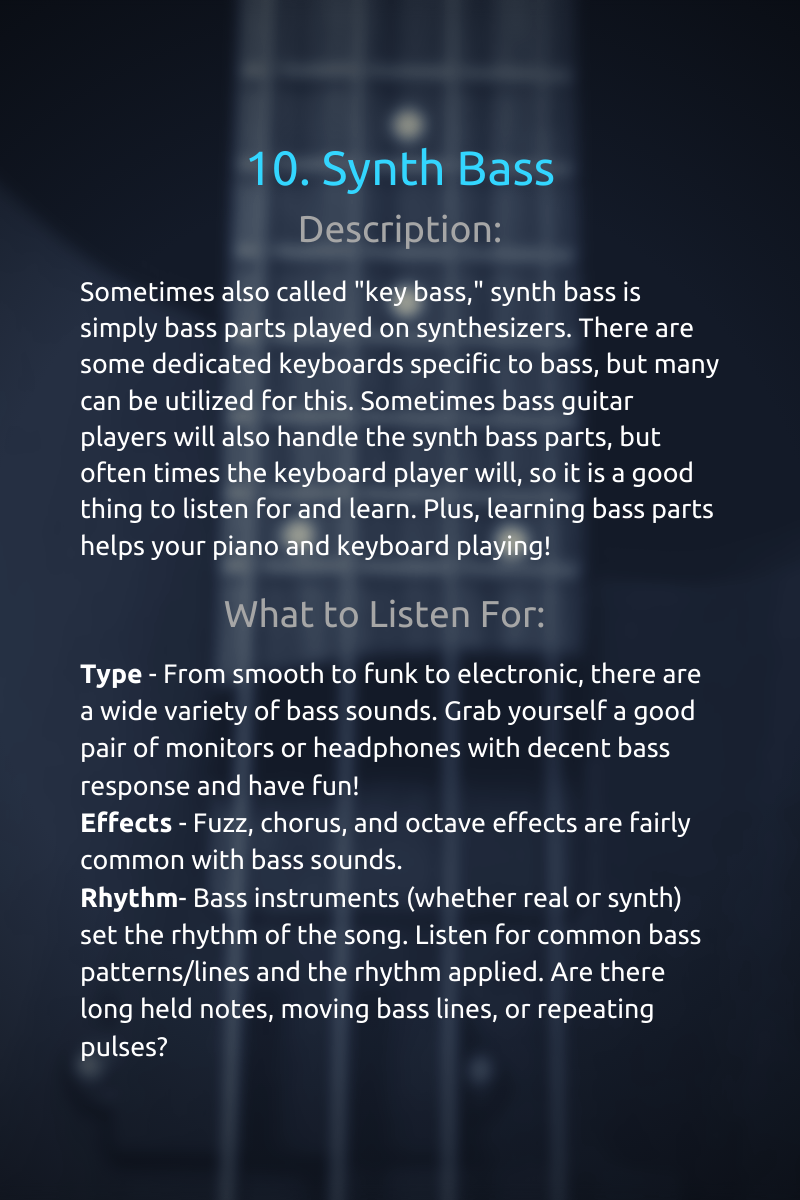10 Key Parts To Listen For Intentionally
Listening with Purpose
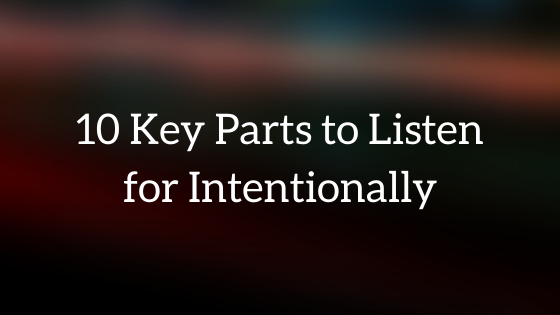
“Most people do not listen with the intent to understand; they listen with the intent to reply.” ― Stephen R. Covey, The 7 Habits of Highly Effective People: Powerful Lessons in Personal Change
These words are so simple yet profound. If you want to reach your keyboarding potential, then listening intentionally in order to understand the music is, without question, the most important thing you can do. Yet, how many times do you just listen to music during your practice time? True listening takes effort, and we’ll talk more about that below. I would contest that focused listening can be more difficult and exhausting than learning a new playing technique, or even how to program a keyboard.
Key Parts to Listen For When Practicing a Song
As keyboardists, we naturally need to know and understand the keyboard parts, which comes through listening. If you are accustomed to listening to solo piano music or only listening for piano parts in songs, this may take some getting used to. That is okay! Listening is a skill that can be practiced and mastered over time, just like keyboarding. Here are 10 keyboard (key) parts to intentionally listen for when practicing a song.
ℹ️ Embed this infographic on your site! Just copy and paste the code below.
<a href="[https://keyboarding.church/post/10-key-parts-to-listen-for-intentionally](https://keyboarding.church/post/10-key-parts-to-listen-for-intentionally "https://keyboarding.church/post/10-key-parts-to-listen-for-intentionally")">
<img src="[https://keyboarding.church/img/infographics/10-key-parts-infographic-dark.PNG](https://keyboarding.church/post/10-key-parts-to-listen-for-intentionally "https://keyboarding.church/post/10-key-parts-to-listen-for-intentionally")" alt="infographic depicting 10 key parts to listen for intentionally">
</a>
As you can see in the graphic, that is far more than just a single piano sound! In fact, you may be wondering why some of those sounds are on there at all, because they are actually sounds from other instruments. Those are valid questions that you will come to know and understand as you continue listening and learning. For now, just know that keyboards are some of the most technologically advanced instruments available right now, and they are capable of so much more than producing one or two sounds. They are comparable only to dedicated/specialized studio computer and/or rack setups!
Sound Demonstrations
Names and labels are great, but as this post will explain more below, in order to listen intently we need to understand what we are hearing and actually KNOW the sounds. The only way to do that is to put a sound with the name by actually hearing it. If you are not familiar with some or any of the sounds listed above, please watch this video demonstrating each sound; then read the short descriptions and explanations of each below.
[Or you can skip the sounds to continue reading the post.]
These 10 key parts are not all inclusive, and they definitely do not go into the minute details of each sound or even the broad spectrum available in each category. This is merely an introductory list to draw your attention to what is happening in the music, and to help you discern what the keyboard contributes to in a song. Start exploring today by listening to the sounds on your keyboard, or head to a local music store and take one for a test drive!
Listening Intently
Maybe you’re preparing for next weekend’s set, so you actually are listening in order to prepare that perfect set list your pastor and congregation will be talking about for months. Or, maybe you have listened to the songs once or twice in order to familiarize yourself with the flow, connect with the lyrics, and to understand the general sound of each song. But, as referenced in the beginning quote, even that is still listening with the intent to reply. It’s replying to the pastor, the congregation, and your fellow band mates. While this is necessary and a worthy cause, you are not actively listening for parts.
Listening with the intent to understand the music and its parts means listening to every aspect of the music. When conversing with someone, you pay attention to facial expressions, mannerisms, and their tone of voice, among other things. You need to listen for those same subtle cues in the music. Music is a universal language, and it’s much deeper than just notes and lyrics on a page.
When learning a foreign language, one’s grammar improves if one learns to listen to the language prior to speaking it (Benson, & Heilt, 1978).
If you have not first heard a style of music, or an instrument, or even a rhythm, how are you to play it? Or better yet, how can you fully understand it with all of its nuances and subtleties, so that you can make it your own and actually “reply” with meaning and purpose? Learn to listen to the musical language first. Then speak it. Otherwise, in the words of 1 Corinthians 13:1, it will just be “[…] a resounding gong or a clanging cymbal.”
How to Listen
To actually listen intently, you have to train yourself and learn. It takes practice and dedication. It also takes time that is set aside specifically to listen and focus.
Here are 4 steps to help you learn to listen:
- Set aside specific listening times. I recommend picking one song and spending 20-30 minutes with it. As you improve, you can reduce the time or add more than 1 song.
- Learn the song structure to pick up on the style, timing, key, and emotion of the song.
- Focus on individual sounds as needed for the specific key parts mentioned above.
- Write down what you are hearing and take notes. I recommend making these notes directly on your music so that when you are playing or programming your keyboard, you have the exact flow you need. This helps you learn the details and commit them to memory.
If you have never done this before, then I have created a worksheet below to help you. This is a free tool to help you start listening and taking notes without making a mess of your music!
Reap the Benefits!
Truly listening, studying, and understanding a piece of music takes effort and time. It is not easy, especially at first. But like everything in life, you reap what you sow! Listening does get easier. It also produces a large return on investment!
- You become a better player by learning to mimic other players and styles and blend them together.
- You become a better band mate as you learn the other parts and how they all fit together.
- It gets easier to replicate sounds you hear.
- It exercises your memory and enables you to memorize your parts and sounds easier.
- And as the encore, it boosts your creativity!
As you combine all of the benefits, you start to find your own style and sound that you can apply to music. You break free from the piano score and the lead sheet. Eventually, you might even start writing your own songs, or at least arranging and creating your own key parts!
Download the Free Worksheet
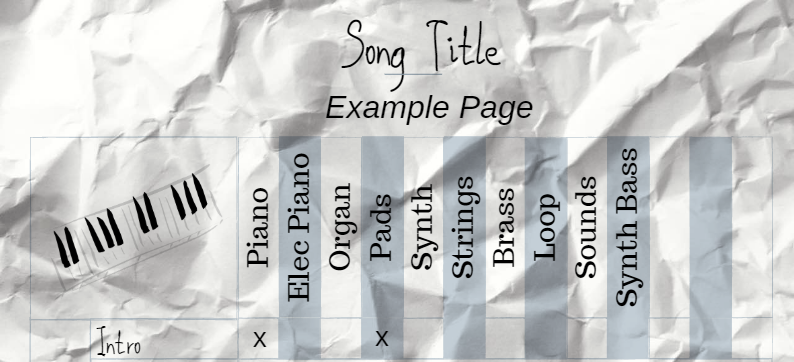
Don’t wait to start practicing this foundational and critical skill. Stop your same old routine. Expand your skill set. Play WITH the band, not just “in” it! Don’t just “play the piano” or “play keyboard.” Be a keyboardist!
Subscribe to download the free worksheet and start today. It will help you learn to listen for each sound and map out your songs. I guarantee it will help you learn to be a keyboardist because this is exactly what I did. I am proof that it works, and I am receiving the benefits. It is something I still do to this day!
Happy Listening!
